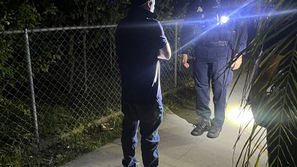Book Talk: Atwood, ‘The Handmaid’s Tale’
- Jim Glynn
- Sep 10
- 2 min read
During the past few months, I’ve seen many references to Margaret Atwood’s “The Handmaid’s Tale” (1984, 311 pages in softcover format). So, I ordered a copy. Wow! I’ve read a few novels about dystopian societies, and George Orwell’s “1984” as well as Aldous Huxley’s “Brave New World” were worrisome. But, “worrisome” does not apply to Ms. Atwood’s novel. Better descriptions are frightening, downright scary, and horrifying.
Before I get into the book, itself, I need to issue a caution and a recommendation. The caution is this: The copy that I obtained is published by Vintage Books, and it has an introduction by the author. The introduction was written in 2017, 33 years after the publication of the work. Fortunately, I did not read it until after I finished the book because it gives away too much of the plot. So, I suggest that you skip it but, by all means, read it after you’ve recovered from reading the novel. Second, all the chapters are numbered. However, after the last numbered chapter, there is a section, titled “Historical Notes on The Handmaid’s Tale.” This is actually the last chapter, although it is not numbered. I don’t know why Ms. Atwood did it this way, and I almost skipped it. So, (1) don’t read the introduction until you’ve finished the book, and (2) do read the historical notes.
Although it’s an older copyright, the book has gained significant renewed attention because too many parts of it seem relevant in today’s political climate. This evaluation occurred to me because, as I thought about the autocracies that have developed in other countries and the threat to our own democracy because of the extreme animosity between our two political parties, I imagined that the dystopia of Gilead could emerge anywhere at almost any time under the right circumstances.
























Comments